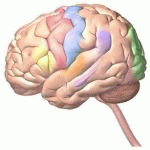Neurology
|
24 october 2014 17:20:28 |
| Changes in activation timing of knee and ankle extensors during gait are related to changes in heteronymous spinal pathways after stroke (Journal of NeuroEngineering and Rehabilitation) |
|
Tweet Background:
Extensor synergy is often observed in the paretic leg of stroke patients. Extensor synergy consists of an abnormal stereotyped co-activation of the leg extensors as patients attempt to move. As a component of this synergy, the simultaneous activation of knee and ankle extensors in the paretic leg during stance often affects gait pattern after stroke. The mechanisms involved in extensor synergy are still unclear. The first objective of this study is to compare the co-activation of knee and ankle extensors during the stance phase of gait between stroke and healthy individuals. The second objective is to explore whether this co-activation is related to changes in heteronymous spinal modulations between quadriceps and soleus muscles on the paretic side in post-stroke individuals.
Methods:
Thirteen stroke patients and ten healthy individuals participated in gait and heteronymous spinal modulation evaluations. Co-activation was measured using peak EMG activation intervals (PAI) and co-activation amplitude indexes (CAI) between knee and ankle extensors during the stance phase of gait in both groups. The evaluation of heteronymous spinal modulations was performed on the paretic leg in stroke participants and on one leg in healthy participants. This evaluation involved assessing the early facilitation and later inhibition of soleus voluntary EMG induced by femoral nerve stimulation.
Results:
All PAI were lower and most CAI were higher on the paretic side of stroke participants compared with the co-activation indexes among control participants. CAI and PAI were moderately correlated with increased heteronymous facilitation of soleus on the paretic side in stroke individuals.
Conclusions:
Increased co-activation of knee and ankle extensors during gait is related to changes in intersegmental facilitative pathways linking quadriceps to soleus on the paretic side in stroke individuals. Malfunction of intersegmental pathways could contribute to abnormal timing of leg extensors during the stance phase of gait in hemiparetic individuals. |
| 74 viewsCategory: Neurology |
 The formation of source memory under distraction (Behavioral and Brain Functions) The formation of source memory under distraction (Behavioral and Brain Functions)Quantitative assessment of microglial morphology and density reveals remarkable consistency in the distribution and morphology of cells within the healthy prefrontal cortex of the rat (Journal of Neuroinflammation) 
|
| blog comments powered by Disqus |
MyJournals.org
The latest issues of all your favorite science journals on one page
The latest issues of all your favorite science journals on one page



